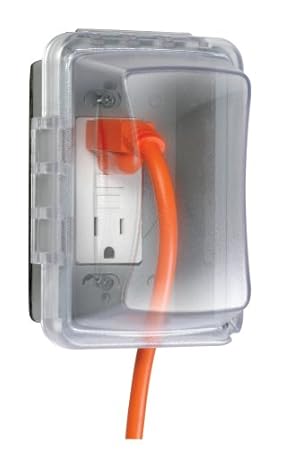- Joined
- Apr 15, 2008
- Messages
- 13,731
- Location
- California Delta
- Vessel Name
- FlyWright
- Vessel Make
- 1977 Marshall Californian 34 LRC
I've got a new charger I'm connecting tomorrow which comes with a 15A 3-prong plug. Rather than cut off the plug and hardwire, I thought I'd add a 120V GFI outlet to the ER at the termination end of my current 120V line to the old charger. It's protected by a 20A circuit breaker at the main panel. I'd like to be able to add the outlet to allow both chargers to be connected to different banks simultaneously. I'd also have the outlet if needed for additional tools or lighting during maintenance and repairs.
It's a diesel boat, so from what I can tell, a 120V GFI protected outlet is allowed. I can't find any problems with to doing this in Nigel Calder's book. I plan to use marine wiring and connection standards and will have a junction box that is wall mounted to protect the double plug GFI outlet.
Can you guys see any problems with my plan? I'm waiting for a call back from fellow TFer Chris Foster who is an ABYC certified electrician. Just thought I'd bounce it by you guys in case he doesn't get the message, figuring you might already have an outlet in your ER.
Thanks!
It's a diesel boat, so from what I can tell, a 120V GFI protected outlet is allowed. I can't find any problems with to doing this in Nigel Calder's book. I plan to use marine wiring and connection standards and will have a junction box that is wall mounted to protect the double plug GFI outlet.
Can you guys see any problems with my plan? I'm waiting for a call back from fellow TFer Chris Foster who is an ABYC certified electrician. Just thought I'd bounce it by you guys in case he doesn't get the message, figuring you might already have an outlet in your ER.
Thanks!
Last edited:

